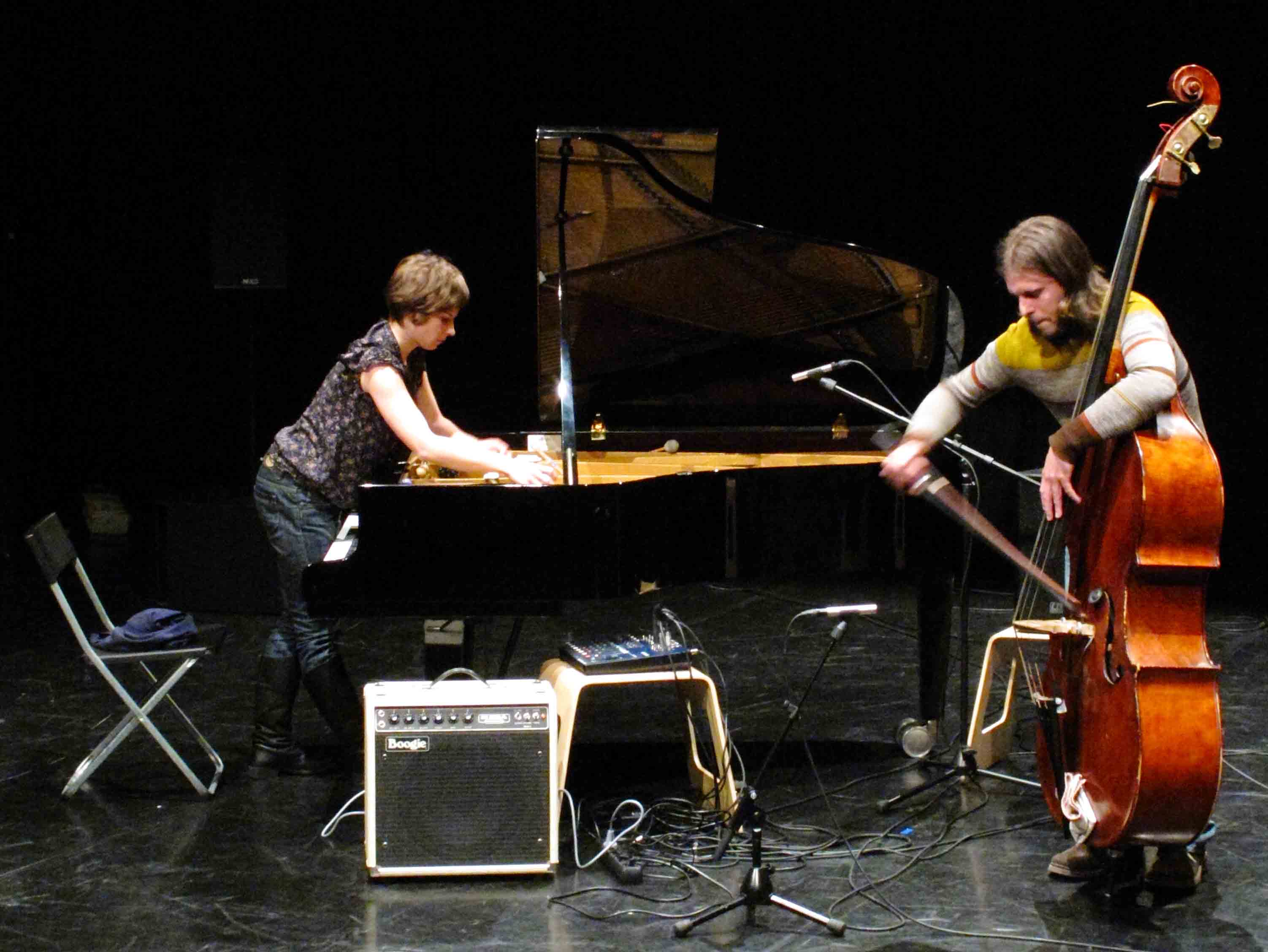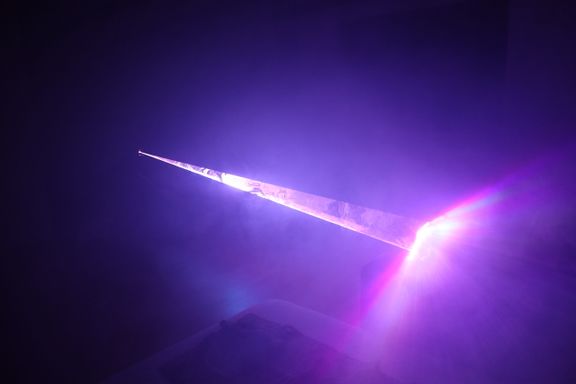Difference between revisions of "Fields of Experimental Music in Slovenia"
| Line 102: | Line 102: | ||
[[Category:Experimental music]] | [[Category:Experimental music]] | ||
[[Category:Selected]] | [[Category:Selected]] | ||
| − | [[Category: | + | [[Category:Overviews]] |
Revision as of 14:23, 20 February 2021
Experimental sounds, field recordings and sound art
Experimental music is the successor of pre-war avant-gardisms and post-war modernisms. Its early herald was the most well-known modern Slovenian composer and trombonist Vinko Globokar. Another branch of experimental music stems from the tradition of electronic and electro-acoustic music that followed the heritage of historical minimalism and ideas of John Cage, aleatoric music, and improvisation.
It is represented by the still-active line-up Saeta with Bor Turel and Boštjan Perovšek at its core. The latter still actively participates in the arena of contemporary field recording practices including everyday noises in compositions and improvisations. Perovšek stretches different everyday soundscapes across an actual and simultaneously imaginary landscape between the world of man and animal, between the urban and the natural. Sound- and multimedia artist Saša Spačal's fragile ambient soundscapes reverberate with the soft and quiet sounds of crickets.
The works of Robertina Šebjanič transport us into an underwater soundscape, through which the artist rigorously approaches environmental issues with the aid of science. Collective Jata C uses sounds of insects to generate layered electro-acoustic soundspaces. Brane Zorman and Irena Pivka (Cona Institute) join forces with a wide circle of creators to take us to uncommon soundscapes: a run-of-the-mill walk transforms into a rich soundscape and a greenhouse or radio become sound galleries. All these artists are strongly conceptually based in the field of bioacoustics and reflect in their works the world's current environmental problems.
Composer, violinist, theorist and poet Nina Dragičević's intense electro-acoustic sound narrative reveals the astounding and cruel realities of the issues of repression, precarity and national minority. Through the medium of sound, sound artist Marko Batista unifies the tangle of wires, everyday objects, digital technology, mechanisms and mechanical transmissions of various audio signals, all torn between the significance and insignificance of signal and noise. We are in a world of sound art which spans music and modern art, perceiving sound as a unique matter outside the strict parameters of music. When the boundaries of this framework open, we can observe an intense synaesthesia of sound and image. This is the case, for example, with the works of Tadej Droljc, which are regularly featured at the notable Ars Electronica.
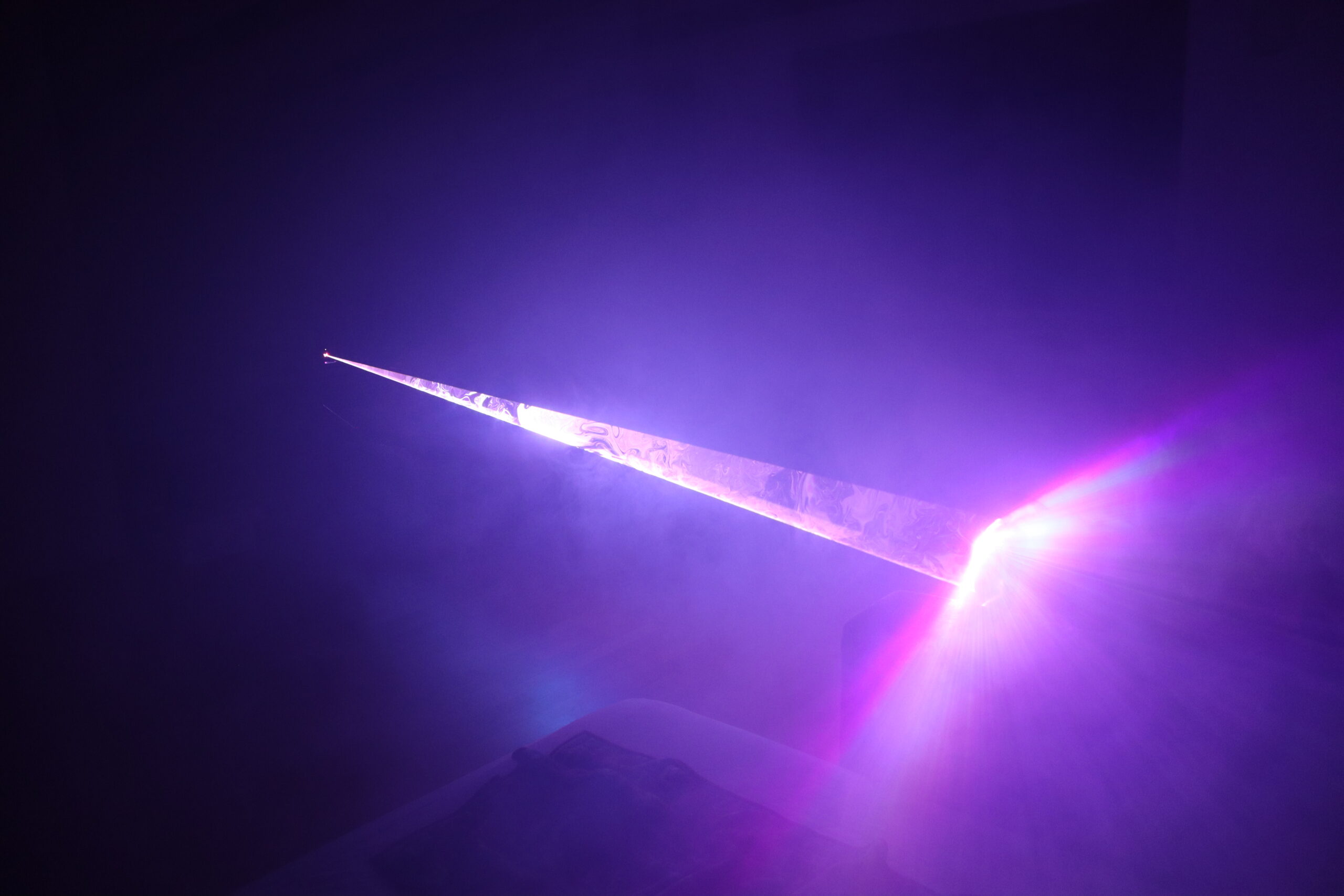 Žarkozlom, Tadej Droljc @ Lunchmeat Festival 2020
Žarkozlom, Tadej Droljc @ Lunchmeat Festival 2020
The practice of field recordings is strongly present in recent years in the work of many artists, such as Robert Leskovšek (Ror), Beepblip and Simon Šerc. The latter is a long-time figure in the Slovenian industrial and noise underground who, alone and in collaboration with artist Martina Testen, has created records that have garnered international recognition. If we move to sound as ethereal phenomena, we enter the work of Tao G. Vrhovec Sambolec and his world of spatial and sound installations, events and interventions, in which (un)mediated sonic events act as a central element that affectively evokes the human bodily presence in what seems the most random everyday acts and situations.
Noise as music, music as noise
The field of so-called noise music condenses, radicalises, sharpens and intensifies all these approaches further. In Slovenia, such radical sound aesthetics stems from the music of the 1980s including the early industrial music of Laibach and in the work of pioneer Mario Marzidovšek. In the 1980s, he was part of the international mail art and tapes movement; today, its adherents flourish more than ever. They are associated with international networks, festivals and labels, and their aesthetics cover a wide spectre of (sub)genre from noise, harsh noise, harsh noise wall to industrial, dark ambient, drone and post-techno. The grounds for the contemporary noise scene were established through the work of Matjaž Galičič, his duo Sist En 343 and solo project Gen 26, his underground label Abnormal Tapes and Noisefest and with the work of Simon Šerc and his various projects and label Pharmafabrik Recordings. Members of the principal Slovenian line-up Ontervjabbit, Neven M. Agalma (who also works as Dodecahedragraph) and Domen Učakar (with his moniker Lifecutter he enters more technoid domain) combine their experience in raw, harsh noise with dark ambient electro-acoustic experiments, audiovisual narration, post-techno, club music, and meta-narrations; all of these are featured on their latest conceptual epic album Torture Garden. Aside from these, the artists who must simply be mentioned here are Kikiriki, Cadlag, Umdhlebi, Mono Scarves, Ssm KOSK, Ž and Neo-Cymex, even though their approaches to the scene differ.
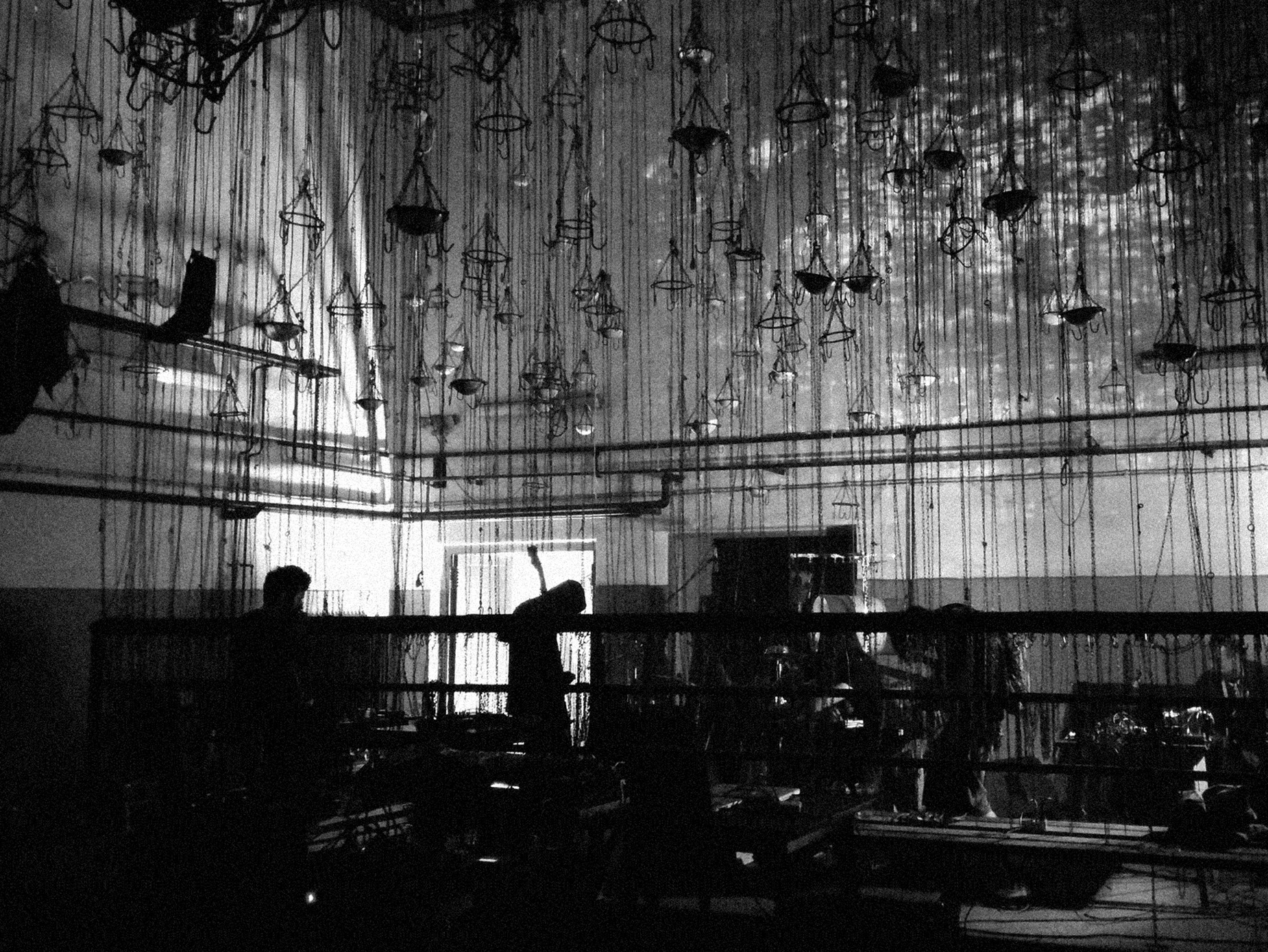 Cadlag at Zasavje Noisefest International in 2014, foto: Nikola Mounoud
Cadlag at Zasavje Noisefest International in 2014, foto: Nikola Mounoud
Utopian freedom of improvisation
If we utterly abolish form, we enter the realm of freely improvised music. In Slovenia, this practice has intensified in the last two decades, becoming one of the more present scenes on our musical territory. Its active proponents include its still-active pioneer, percussionist Zlatko Kaučič and double-bass player Tomaž Grom. Kaučič is cosmopolitan, but committed to the periphery; Grom creates in the centre and passes from it to the periphery. Kaučič was the first to establish strong initial creative contacts abroad, where he immigrated as a young man; and Grom weaved them at home.
They have both created concert series and opened concert venues, later founding the central international festivals of improvised music in Slovenia, their own labels and associations for publishing their own work and for the support of others. Kaučič has educated four generations of younger musicians with his school (guitarist Vitja Balžalorsky, saxophonist Jure Boršič, bassist Matjaž Bajc, drummers Gal Furlan, Urban Kušar, and many others). Grom offered them a creative platform in the form of the workshop Raziskava, refleksija. Both are (co-) initiators of two international improvisational orchestras, Kaučič's Orkester bez meja / Orchestra senza confini and Grom's Šalter Ensemble.
Above all, with their work and engagement, they have co-created mechanisms and strategies which today lend freely improvised music a place both in the wider Slovenian cultural landscape and the international community. Tomaž Grom collaborates with fixed and ad-hoc line-ups, both as a band member and solo act. He expands his distinct sound expression on the double bass with electronic music, integrating it into performance art and theatre, contemporary jazz and electro-acoustic music. He created a notable audiovisual instrument known as the IMstrument and creates creative collisions between music, poetry, performance art and contemporary dance.
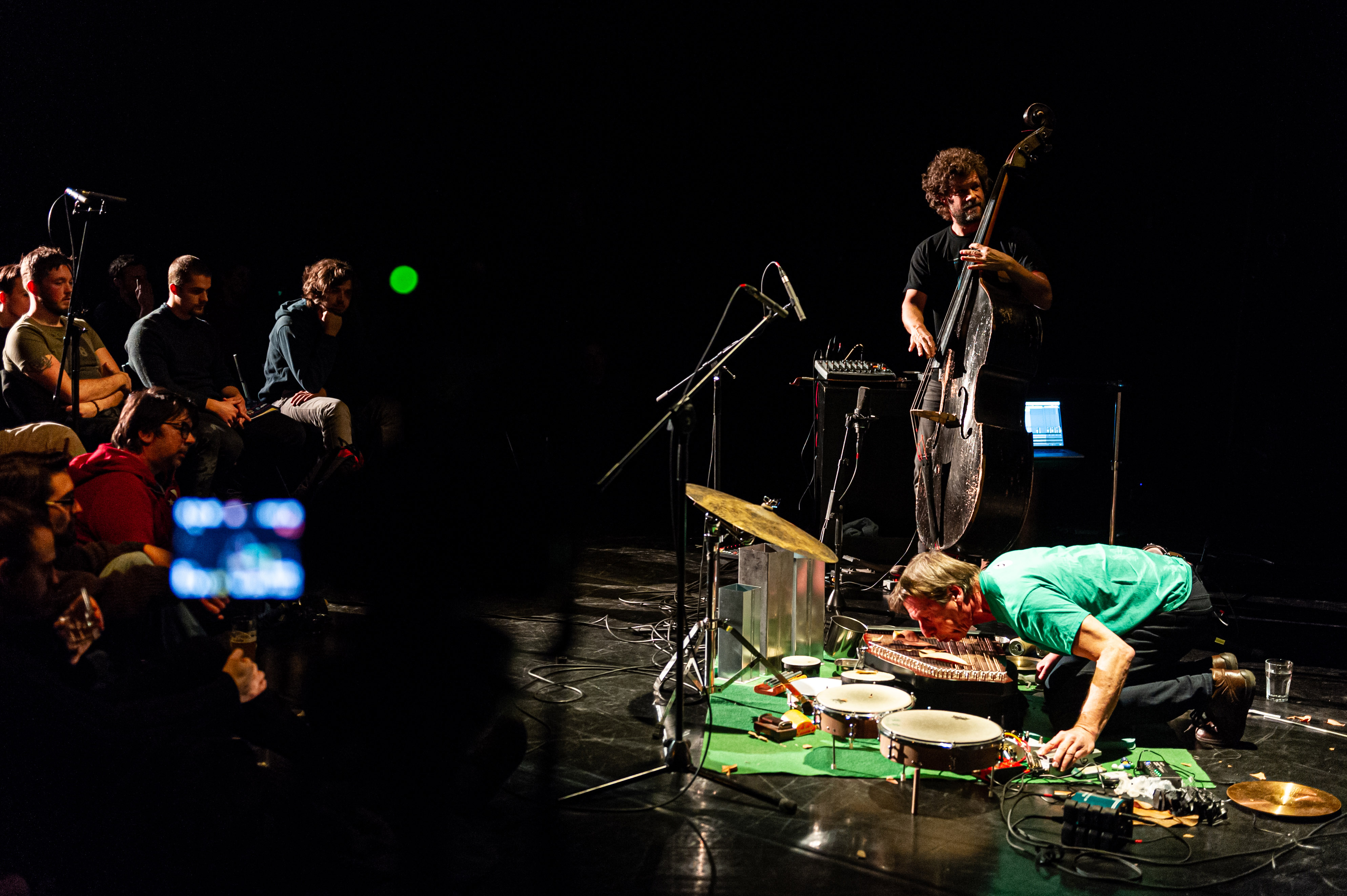 Zlatko Kaučič and Tomaž Grom, photo: Marcandrea
Zlatko Kaučič and Tomaž Grom, photo: Marcandrea
Pianist Kaja Draksler is another notable improviser working hard in the international circle, playing on all the major festivals and concert stages. A plethora of improvisers follow their examples. The prepared drums and modular electronic sounds of Jaka Berger, Samo Kutin's modified hurdy-gurdy, the impressive vocal improvisations of Irena Z. Tomažin, and the conceptual framework of drummer and composer Dré A. Hočevar, various bands and ad hoc meetings of bassist Jošt Drašler and his brother, drummer Vid Drašler, fierce exploration of noise, silence, minimalism and corporeality of saxophone player, guitarist and no input mixer musician Marko Karlovčec, raw sounds of violin strings by Ana Kravanja and Marko Jenič all break the established perimeters of sound.
While the omnifarious work of improviser, composer, flautist, vocalist and electronic musician Maja Osojnik blends all the sound aesthetics above. In the 2010s, there have been noteworthy connections and intersections between the field of improvisation and contemporary classical music in its most experimental forms, such as graphic and open compositions. Composer, drummer and improviser Dré A Hočevar established Institute .abeceda through which he runs various research and educational platforms, residencies and concert series for young musicians coming from different musical backgrounds, who are already making their names on the scene (bassist Gašper Livk, guitarist Tobija Hudnik, pianist Miha Gantar, saxophonist Brina Kren,…). Classical accordion player Luka Juhart is blending improvisation with contemporary classical music inside his student teachings and performances in Academy of Music. Saxophonist and composer Tilen Lebar and guitarist Primož Sukič are both working inside open compositional contexts and improvisation.
Infrastructure(s) of sound(s)
In just over three decades, the scene has literally formed itself and won its place not only in the Slovenian music scene but also more widely. In this way, the scene has gained and established spaces, designed festivals, record labels and concert series, through which it enters international networks. Contemporary publishing in Slovenia in the field of experimental music of the last two decades takes place mostly outside the established distribution channels, so it invents its own ways of presentation, distribution and promotion, also in an international context.
This activity intertwines different approaches to independent publishing, from systems based on co-financing mechanisms to self-publishing and DIY, principles in the field of underground international networks. It intertwines digital releases, using platforms such as bandcamp, to cassette, USB and vinyl releases. Most record labels are the result of the work of musicians themselves and enthusiasts.
One of the first Slovenian labels to focus on the field of free improvisation, electro-acoustic music and contemporary music was the distinctly internationally oriented L'innomable. Sploh Institute represents the field of improvised music, experimental music and contemporary classical music, and includes works by many local artists and their collaborations with international artists. In the last few years, Ljubljana has also been home to Inexhaustible Editions, a strong international label in the field of free improvisation and contemporary music.
Založba Klopotec follows the lines of improvised music and contemporary jazz by Slovenian and international artists and is based on the dedicated work of the internationally renowned photographer and recordist of concerts Iztok Zupan. The label Zvočni prepihi focuses on the works of Jaka Berger and his peers and focuses on the broad fields of experimental music, improvisation, contemporary jazz, experimental electronics and noise. It is partly followed by the Kamizdat, which also intervenes in the domain of field recordings, electro-acoustic music, sound art and modern post-club electronic practices. Pharmafabrik Recordings has been taking us into a more expressive field of noise, field recordings and dark ambience for many years, followed today by the younger label Terraformer Research Facilities. Finally, the artists of ŠOP Records, which presents a young new underground with bold aesthetic breakthroughs, place us in the extreme eclecticism of various musical practices.
The concert landscape of the present sound experiences consists of individual concerts, concert series, festivals, sound performances and sound installations, which enter a wide field of diverse spaces, from institutional (Kino Šiška, Cankarjev dom, Španski borci, Narodni dom Maribor,…), club venues (Klub Gromka, Klub Metulj,…), galleries and museums (MSUM, Galerija Kapelica, Galerija ŠKUC, Kibla, …), to artists run spaces (Cirkulacija2, Osmo/za, GT22,…) and temporary spaces. They embody various organisational principles, from established programmes supported by local, national and European co-funding mechanisms, through self-initiatives and self-organisation, to entering already established formats such as music festivals and contemporary art festivals (Jazz festival Ljubljana, Jazz Cerkno, MFRU, Pixxelpoint,…).
In recent years the scene has been strongly regionally dispersed and decentralised outside established urban centres. An important continuity has been built for many years in Ljubljana by the concert series Defonija and Confine Aperto, which for two decades have taken care of the continuous presence of this kind of music in our environment and enabled the meetings and cooperation between domestic and international musicians. The main two festivals for free improvised music are Sound Disobedience in Ljubljana and Brda Contemporary Music Festival in Goriška Brda. Both are strong festivals with international participation, which also include music workshops.
Improcon – International Congress of Improvisation, Art and Thought is the result of cooperation between a Slovenian and a Croatian enthusiast. The event brings a completely new festival model based upon on the spot spontaneous meetings of musicians and the festival's spontaneous programme formation. The concept of Improcon continues in the concert series Rezidents. The series is a peculiar open platform, residence, concert, social event, exchange, coexistence. It is an open space for local and international initiatives, ideas, socialising, community building, going beyond the established format of a concert event and concert space with its characteristic hierarchies, silent codes and reproduction of established relationships (stage-podium, creators-audience, creation -accompaniment, headliner-support, activity-passivity, sound-silence, music-other forms of artistic expression, reflection-socialising-entertainment…).
Other active concert series with strong international participation include FriForma and its audiovisual version FriFormA\V in Ljubljana, Sunday Noise in Bistrica ob Sotli, Klub Štala in Vipava, Fri-Fru-Fra cycle in Nova Gorica. Impronedeljek series offers a meeting place for various genre approaches, and the Ropotarnica cycle looks into the form of solo performances. The Sound Explicit Festival merges jazz, free jazz, rock in opposition, free improvisation and experimental electronica into a gallery environment. Zvokotok significantly establishes intersections between the fields of contemporary classical music, experimental music and improvised music. Zasavje Noisefest International takes us into the sphere of noisy sound derivatives, which takes place in a suitable industrial environment in former mining premises and a thermal power plant. The model for it in the past was the important Noisefest, which today takes place under the name Mrožfest.
For twenty years, Tolmin has hosted Sajeta festival, a bold and eclectic international centre of diverse musical practices in an idyllic location by the Sotočje. The festival and symposium Topographies of Sound is taking place in Ljubljana and presents the works of women sound artists at home and abroad through performances, installations, conversations and reflection. The premises of the Botanical Greenhouse in Ljubljana's Park Tivoli is the home of Steklenik, in which sound art takes place on the border between art, science and nature. The artist collective and space Cirkulacija2 also works in the related spheres of sound and contemporary art research.
For many years, Zvo.či.ti DUO cycle with its concept of duets brings together domestic and international actors in the field of electro-acoustic music, free improvisation, sound art. Sonica Festival presents the intersections of contemporary musical expressions, club culture, sound and multimedia art, exhibitions and audiovisual performances. It represents a contemporary international festival embedded in the strong European festival platform SHAPE (Sound, Heterogeneous Art and Performance in Europe), co-funded by the Creative Europe programme.
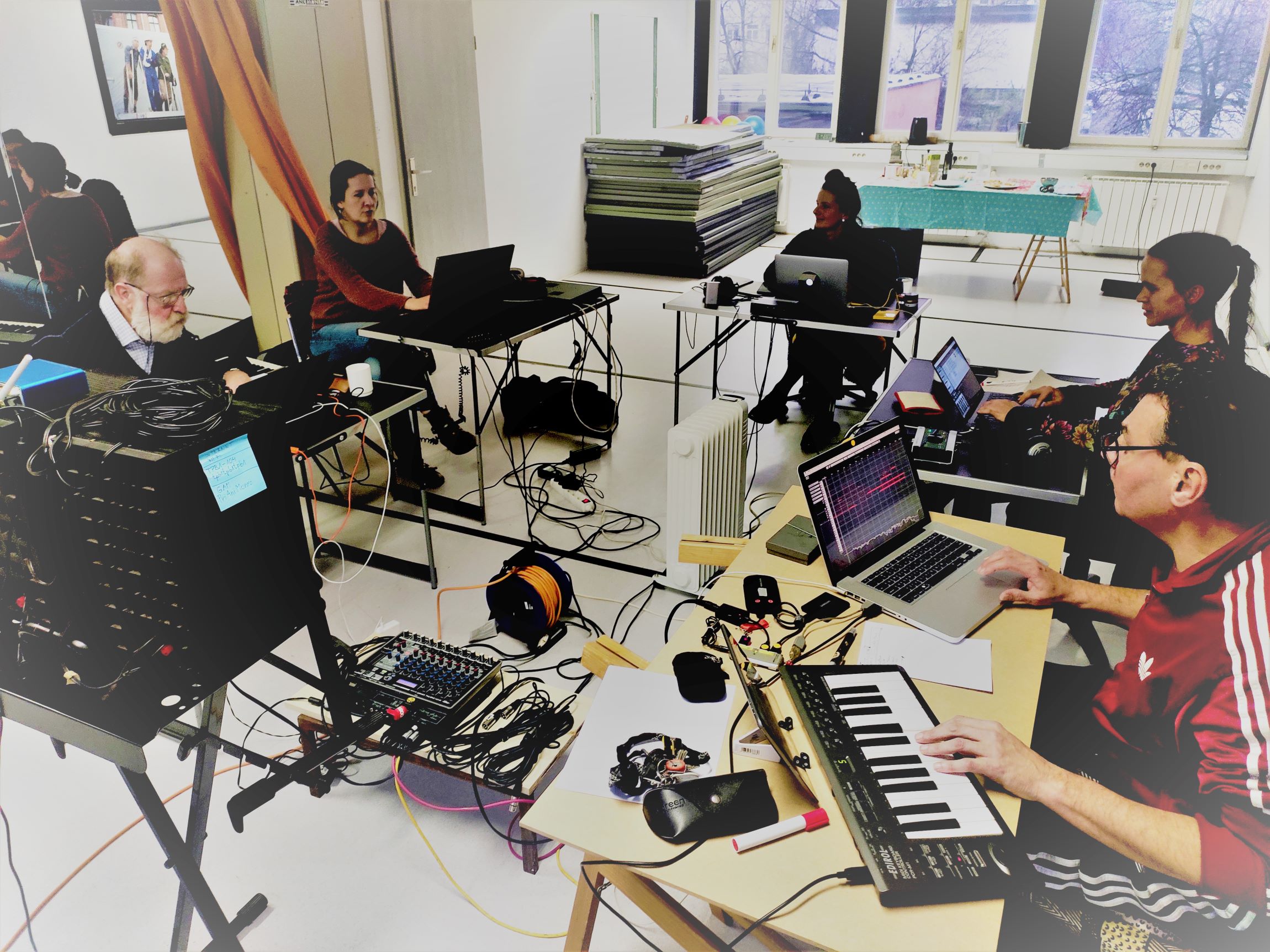 Jata C, Photo: © Cona Institute
Jata C, Photo: © Cona Institute
For decades, experimental music has had a broader background in journalism and music criticism. For many years, it has been regularly present on Radio Študent, Radio MARŠ; in daily, periodical and specialised press and publications; and in the last decade also more intensively on the national radio-Program ARS, although the media landscape is continuously shrinking in the previous few years.
But one of the many proofs of the resilience and resourcefulness of the scene is also Centralala, an internet magazine which the scene established itself to document, focus, reflect, support and question streams of various approaches, principles and aesthetics of individual musicians, groups, artists from other fields of art (experimental music, sound art, contemporary dance, visual and performative art, literature etc.), institutions, organisations, venues, record labels, producers, journalists, writers and theorists.
This text has been merely a quick overview of the creative simmering in the field of experimental music in Slovenia that silently influences the mainstream from the fringes. Even though often relegated to the very periphery of mainstream musical activity, this scene is the most integrated and internationally active. It holds within itself a wide, innovative, extremely exciting and varied musical kaleidoscope, which may not necessarily have a homogenous and common history in these parts, but what it does have here, are numerous convergences and in-between spaces.
AUTHOR BIO:
For two decades, journalist and music critic Luka T. Zagoričnik has been writing about music, organising concerts and sound events, giving and organising lectures at home and abroad, preparing and moderating radio and TV shows. We’ve updated his overview for Culture.si from the pocket music guide Listen to Slovenia published by SIGIC, Slovene Music Information Centre.



